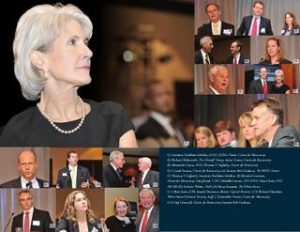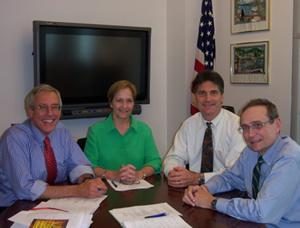Publications
Find books, studies, acknowledgements, and published papers citing or written by Peter Jutro.
Sludge and Risk Assessment
Chemical and Biological Characterization of Municipal Sludges …, Issue 976
HISTORY OF LIGNUMVITAE KEY By Jerry Wilkinson
The serious student of Lignumvitae Key must consult the Cornell University thesis of Dr. Peter Jutro, dated August 1975. The following are my simple accounts of research of the “Wood of Life” Key.
Human Influences on Ecosystems: Dealing With Biodiversity
Author Peter R. Jutro
The Living bird : Fourteenth Annual, 1975
Green Jay in Colombia; Sunbathing in Grebes; Harris’ Hawk in Southern Arizona; Lek mating system of the Ruff; Frigatebirds; Laughing Gulls; Herons; Roadrunner; Hawks & Owls; Marsh Wrens
On The Web
Find Peter Jutro’s speaking engagements, meeting minutes, charity contributions, and more!
Preparing for Decon After Anthrax Attack
This video is of panel discussion was one of several at a one day conference, The State of Biopreparedness: Lessons for Leaders, Proposals for Progress, held September 23, 2010, in Washington, DC. The panel was made up of Crystal Franco, Center for Biosecurity of UPMC, Moderator; Peter Jutro, EPA; Joseph Donovan, Beacon Capital Partners; BOMA National Preparedness Committee.
The Center convened this national meeting in Washington, DC, to provide a forum for thought leaders from the public and private sectors to discuss ongoing challenges and priorities in biopreparedness and identify opportunities for improvement. Featured speakers included HHS Secretary Kathleen Sebelius; Senator Bob Graham; Andrew Weber, DoD; and Alex Garza, DHS.
The State of Biopreparedness: Lessons for Leaders, Proposals for Progress
The State of Biopreparedness: Lessons for Leaders, Proposals for Progress
 Speaker: Peter Jutro, PhD
Speaker: Peter Jutro, PhDCenter for Biosecurity Annual Report 2011
The Center for Biosecurity is an independent nonprofit organization of UPMC. Our mission is to strengthen U.S. national security and resilience by reducing dangers posed by epidemics, biothreats, nuclear disasters, and other destabilizing events. Our staff comprises experts in medicine, public health, national security, law, economics, the biological and social sciences, and global health.

EPA Science Matters Newsletter: Volume 2, Number 5
 Homeland Security Research Program: Directors’ Roundtable: Research leaders talk about EPA’s role and responsibilities in homeland security.
Homeland Security Research Program: Directors’ Roundtable: Research leaders talk about EPA’s role and responsibilities in homeland security.
ASU College of Law
Biography for Peter Jutro From ASU College of Law’s website.
Rutgers CCL Directory
Rutgers Computational Chemodynamics Laboratory Directory page for Collaborators, Peter Jutro, PhD
Armed With Science
The Official U.S. Defense Department Science Blog, Armed With Science. This is the page for all archived news tagged “Dr. Peter Jutro.”
Armed With Science
Scientific Collaboration Helps Environment, Security.
During an April 7 interview on the Pentagon Channel podcast “Armed with Science: Research and Applications for the Modern Military, ” Peter Jutro, deputy director for science and policy at EPA’s National Homeland Security Research Center, noted that while the EPA and Defense Department missions differ, they have common goals.
Armed With Science
Wednesday Webcast: DoD and EPA Scientific Collaboration.
Dr. Peter Jutro, Deputy Director for Science and Policy at the Environmental Protection Agency’s (EPA) National Homeland Security Research Center.
He will discuss how EPA’s research (in collaboration with the Defense Department, Department of Homeland Security, and Department of Health and Human Services) provides scientific support to develop detection tools, establish procedures for containing contamination, measuring risks, and evaluating new and promising clean-up technologies and methods, including disposal methods in support of first responders.
Dr. Jutro will also highlight EPA’s roles and responsibilities for homeland security research in two key areas: protecting critical infrastructure (drinking water and waste water systems) and recovering from biological, chemical or radiological attacks following domestic incidents.
Listen to Episode #62: EPA and DOD Decontamination Science and Collaborative Research with Dr. Peter Jutro here.
Synthetic Biology Leadership Excellence Accelerator Program Mentors
Peter Jutro has long had involvement with issues surrounding emerging or evolving technologies. He is Deputy Director for Science and Policy of EPA’s National Homeland Security Research Center, the group responsible for research needed to provide the science and technology for EPA’s homeland security mandates, which fall primarily in the areas of decontamination, water protection, environmental protection, and risk assessment. Peter is a member of several science advisory and intergovernmental groups and is currently Chair of the intergovernmental Civil Applications Committee, which oversees federal policy for the civilian scientific and technical use of classified data. He was founding Director of the EPA Global Change Research Program, a founding member of the U.S. Global Change Research Program, and a U.S. negotiator for the United Nations Convention on the Conservation of Biological Diversity. Peter received his Ph.D. from Cornell University, for research on the geography of infectious disease and natural pharmaceuticals, chemical ecology, and conservation, and then joined the faculty, where he taught in the areas of risk assessment and environmental security. He is an elected Fellow of AAAS..
Cooperation Helps Environment, Security
EPA has two homeland security responsibilities: acting as the lead federal sector for protecting the nation’s drinking water, and dealing with decontamination if a homeland security incident occurs.
“We’re always on the lookout for ways to make cleanups and recovery more cost effective,” Jutro said. “There’s a lot of this brand-new, over-the-horizon technology, and for this, we really depend on [the Defense Department].”
The two also work together on dual-use tools, models, technologies and methods – “things that can be used for homeland security but will have broader, environmental protection or defense uses as well,” he added.
The environmental agency and the Pentagon also have been working together on developing standard analytical methods for homeland security incidents.
INDIGENOUS LANDSCAPES A STUDY IN ETHNOCARTOGRAPHY
CENTER FOR THE SUPPORT OF NATIVE LANDS BOARD OF DIRECTORS
Launch of Rad Resilient City Initiative Conference Photos
Brian Kamoie, National Security Staff; Peter Jutro, EPA; Phil Palin, RCPGP Project 4
NIH Office of Science Policy Ex Officios Roster
Environmental Protection Agency
Peter R. Jutro, Ph.D. Deputy Director National Homeland Security Research Center
AAAS Workshop: S&T to prevent and respond to disasters
The AAAS Center for Science Technology and Security Policy and The Asan Institute for Policy Studies will host a workshop (Jan. 22-23) titled, Science and Technology to Prevent and Respond to CBRN Disasters: U.S. and South Korean Perspectives. The workshop will focus on prevention and remediation of chemical, biological, radiological, and nuclear disasters that could occur either through accidental (caused by, for example, facility problems, personnel issues, a natural disaster, or some combination of events) or intentional means. Discussions will involve various scientific disciplines including the behavioral and environmental sciences. RSVP today!
Speakers:
Peter Jutro, U.S. Environmental Protection Agency
SRA RISK Newsletter Published by the Society for Risk Analysis
Wednesday’s Plenary Session was a panel discussion on “Environmental Terrorism: Role for Risk Analysis.” The panel was chaired by Dr. Peter Jutro, Counselor to the Administrator for Environment and Security at the U.S. Environmental Protection Agency and Deputy Director of the new Homeland Security Research Center.
Camp Scatico Alumni Newsletter
Peter Jutro (1962-68) sent in these four photos of iconic images from the mid-1960s. To the left and above—Picture Day: the nurses in uniform and Uncle Nat (wearing long pants and a bowtie) arranging the troops. To the right and above—the Carnival on the boys’ campus: the “I Dare You” booth and the threatened destruction of a camp car. Peter lives in Arlington, VA, and is the chef scientist for homeland security research at the Environmental Protection Agency: “I work in collaboration with all the other federal departments and agencies as well as with the White House to design and undertake the research we need to try to better prevent, prepare for, and recover from any natural, accidental, or intentional catastrophic event.”
AU WATER RESOURCES CONFERENCE TO FEATURE EXPERTS ON WATER ISSUES, DROUGHT
AUBURN – Scientists, industry leaders and government officials will gather at Auburn University June 14 -15 to seek solutions to growing problems with the availability, quality, protection and utilization of the nation’s water supply. Experts will be available to discuss effects of the current drought and what methods, such as irrigation, can help combat the problem.
The conference, “Bridging the Gap Between Science, People and Policies,” at The Hotel at Auburn University and Dixon Conference Center will examine the impact of water resources upon:
– Human Health
– Food Production
– Homeland Security
– Economic Growth
– Recreation
Speakers will include:
– Peter Jutro, Deputy Director for Science and Policy at the National Homeland Security
Research Center, Environmental Protection Agency
